new posts in all blogs
Viewing: Blog Posts Tagged with: young adult literature, Most Recent at Top [Help]
Results 51 - 75 of 242
How to use this Page
You are viewing the most recent posts tagged with the words: young adult literature in the JacketFlap blog reader. What is a tag? Think of a tag as a keyword or category label. Tags can both help you find posts on JacketFlap.com as well as provide an easy way for you to "remember" and classify posts for later recall. Try adding a tag yourself by clicking "Add a tag" below a post's header. Scroll down through the list of Recent Posts in the left column and click on a post title that sounds interesting. You can view all posts from a specific blog by clicking the Blog name in the right column, or you can click a 'More Posts from this Blog' link in any individual post.

Last Wednesday, the 16th of November, was the Public Librarians of Victoria Network Conference.
The main topic up for discussion: what to do for the National Year of Reading? Here are some great ideas that the participants on the day workshopped together!
SHP BASED TOTALLY AROUND BOOKS AND READING, WRITING AND ILLUSTRATION, WORKSHOPS, AND BOOK GIG!
Intensive festival/ Holiday program:
- Book gigs/ theatre – use local theatre groups of Vic Youth Theatre
- Writing Workshop (examples Paul Collins)
- Illustration workshop (examples comics, manga)
- Book Production (examples cover designs)
- Book Selection evening
- Competitions
Mini festival
READING TREE
Families:
- Members of the family’s favourite books
- Favourite books on display for each person in a family tree
Make a tree/ Use a tree in a pot:
- Find an author you like
- Than other books you like that are similar (series, authors, books)
- Use a leaf as a star review system
Children’s Area:
- Wall pictures/ image of a tree
- Branch for different books
- Children put up authors on the tree, pictures of favourite characters, etc
- Write on a leaf why they like/recommend a book
- Different size leaves for grades/ genres or themes
- Make a special reading corner
Favourite/ comfortable reading areas:
- Use tree to start conversations about ‘where do you like to read?’
Use the image/ symbolism of growth, strength to start creative writing from a seed to a story:
- How does it develop?
- Grow?
What a tree does:
- A forest, filled with: crime tree/ mystery tree/ romance tree, etc
Environmental issues:
- How we need trees, different species of trees, uses of trees, etc
THEATRE IN THE LIBRARY
Theatre:
- Students from local secondary schools
- Workshops over the school holidays
- Culminating in a performance for the public
LOCAL SOURCING
Contacts:
- Database of local contacts
- Using local contacts
- Database contacts for state-wide access
- Finding contacts
AUTHORS/PRESENTERS
Issues:
- How to entice writers/presenters to travel
- Issues for regional and outer suburbia
- A database of author’s who a willing to travel regional
BRANDING
National Year of Reading:
- Using National Year of Reading branding to make activities more visible and use this as an enticement
- Would add funding
- Also a draw card for the presenters
COMMUNITY POST SECRET
Art and Writing community project:
- Originated with an idea from an American artist, Frank Warren, who asked for ‘secrets on a postcard’.
- A secret (funny, sad, moving, happy secrets, etc)
- Have the community do their own post secret
- Have them displayed in the library
- Alternatively there is ‘six word memoirs’
YA READERS VOTING FOR FAVOURITE BOOK/ SERIES (WITH WINNERS IN A FEATURE DISPLAY)
Suggest books:
- Have an already established shortlist
- Creative ways to vote- posters, old fridge, car doors, etc
- Cork Board – with suggestions/ questions and post-it notes for people to make direct response/ dialogue
- Utilise skills/ skilled people in the community
- On-line pdl/ questions of the day (multiple choice, yes or no)
- To suggest books/ series or not
Favourite Aussie authors
Encourage diversity in reading by asking reading question ‘where do we find Dogmatix’?
I’ve been reading a number of highly anticipated sequels lately, as well as editing a sequel or two myself. It has me thinking about the best ways to reintroduce your reader to your characters and plot that they may have just read last week—or maybe it’s been more than a year. How do you avoid over-dumping on the re-reader without leaving the non-re-reader in the dusts of confusion?
One strategy I’ve seen in sequels for young readers, especially, is to just stop the action entirely at some point in the first chapter and explain what happened in the last book. It’s a trick I saw used a lot in series books for kids when I was a young reader obsessed with Trixie Belden and Nancy Drew books.
This doesn’t really work for me. Any stopping of the action for an infodump breaks the spell for me as a reader, taking me time to rebuild my suspension of disbelief. It worked to a point in those old series books because my library didn’t always have every single copy in order when I wanted them (not to mention they were missing several volumes), but especially if you’re not writing series books (as in, shared-world), it’s not the best strategy, in my opinion.
Then there’s the school of thought that just dumps you into the action of the new book. This can work, but it’s tricky. One book I read recently is a good example (no, I’m not going to tell you the name of it): I’m right there with the story until the character thinks of another character who she’s lost touch with. He’s not in any scene for the first quarter of the book, and I was racking my brain that whole time trying to remember which of two or three possibilities he could be, and that confusion wasn’t cleared up when he showed up in-scene. And it’s a confusion that I’m not sure the author could have anticipated. Maybe I should have glanced back at the previous book to remind myself. Was he a love interest? Was he a brother? Was he a potential love interest who turned out to be a brother? (Perhaps too much Star Wars in my diet?) I couldn’t remember until at least halfway through the book, and mostly because I picked up the last book and skimmed. This has happened to me a few times lately.
I think there are ways to help jog the reader’s memory without losing momentum or forcing the reader to go back to the previous book (some readers might not even have the previous book on hand—they might have borrowed it from the library or a friend). In my opinion, the best way to remind readers, whether they’ve just read a book and are launching into the sequel immediately or it’s been a year since they read the last book, is the same principle as getting your reader into a completely new world: through well-placed details planted with a deft touch.
Let’s look at the opening pages of Catching Fire, the second book in The Hunger Games trilogy, for an example. The first two paragraphs are right in the moment, Katniss thinking about what’s going on right now and what’s about to happen. We don’t get a direct reference to the Hunger Games until paragraph 3, but all along she’s talking about their outcome because that’s what life is for her now: reporters and camera crews, preparation for the Victory Tour, the dread she feels so much that it’s physically affecting her.
Then in paragraph 3 we get a quick review of book 1 with an in-scene rumination on how much she wants to forget the Hunger Games but isn’t allowed to because it suits the political purposes of the Capital. One paragraph, and it all matters to the current plot. She doesn’t stop the plot to explain what the Hunger Games were, just reminds the reader with a deft touch of the repercussions of all the events of book 1.
Then we’re on to the scene again, and the purpose of Katniss being in the woods: hunting for her best friend, Gale, who can’
1. Amazon: the world is your oyster.
Seems there’s a new frontier: e-book lending, Amazon style.
Of course it’s a very exclusive kindle-only and subscribers-to-Amazon-Prime-program club.
At the moment it is a limited and not all that interesting virtual library. But knowing Amazon this will be short lived. Expect it to grow by leaps and bounds. Also expect everyone else under the sun to have their own version in a heartbeat.
2. YA book bloggers; a resource.
The Centre of Youth Literature are proud as punch that the international online community is all a gush with Aussie YA. Take a look at Carla’s blog, The Crooked Shelf, for ‘Aussie YA Month.’
Carla is a force of nature. She is a whirlwind when it comes to YA; lots of capitals, lots of exclamation points and lots of enthusiasm.
Please beware the occasional course language.
3. Book banning Google map.
A rather industrious person at the library found this little Google map gem: an American book bans and challengers list (only 2007 to 2011). What scares me is the length (in a few short years) and the breadth (nearly every state in America) of this list.
Surely the idea is to fill the libraries, not empty them out.
4. John Wood, honorary librarian.
It is a classic story: former Microsoft big wig turns charity founder. His belief? That ‘World Change Starts with Educated Children.’ His charity, Room to Read, has the rather staggering statistic of opening (on average) six libraries a day.
‘So many American efforts to influence foreign countries have misfired — not least here in Vietnam a generation ago. We launch missiles, dispatch troops, rent foreign puppets and spend billions without accomplishing much. In contrast, schooling is cheap and revolutionary. The more money we spend on schools today, the less we’ll have to spend on missiles tomorrow.’
A hero after my own heart.
 5. Christopher Paolini release
5. Christopher Paolini release
Fourth and final book in the Inheritance Cycle (now that it’s no longer a trilogy, mind) will be in stores on the 9th of November. There’s a competition for signed hardback additionsfor all those die hard fans.
An amen for all those left with Harry Potter withdrawals.
Exams.
Theoretically you should have your nose to the grind stone. No TV. No Music. No books for pleasure.
It’s study study study for the students and marking marking marking for the teachers.
I can’t say I’ve ever managed the theory. I prefer the practical. And practically, you need a break.
So here’s an ‘escaping exams’ book list.
It’s pure escapist fun! Something light to pick up and put immediately back down. Books that have nothing to do with schools, exams or high school drama! And no crying! Definitely no crying.
May I suggest the ‘study and reward’ system I developed for myself? Two hours of study deserves a reward of two chapters. The more addictive the book, the more likely the study!
 Holly Black – A Modern Faerie Tale (Tithe, Valiant, Ironside)
Holly Black – A Modern Faerie Tale (Tithe, Valiant, Ironside)
An edgy, enthralling tale about malicious faeries and grungy teenagers. They’re small, easy to read and completely addictive. Something to entice whilst in the exam throes.
Sixteen-year-old Kaye is a modern nomad. Fierce and independent, she travels from city to city with her mother’s rock band until an ominous attack forces the sixteen-year-old back to her childhood home. There, amid the industrial, blue-collar New Jersey backdrop, Kaye soon finds herself an unwilling pawn in an ancient power struggle between two rival faerie kingdoms — a struggle that could very well mean her death.
William Goldman -The Princess Bride
I had a rather interesting conversation about the title of this book recently. ‘Princess’ and ‘Bride’ do not, alas, lend themselves to being receptive to male readers, which is truly unfortunate because this is the perfect book for any young adult.
What’s it about? Fencing. Fighting. True Love. Strong Hate. Harsh Revenge. A Few Giants. Lots of Bad Men. Lots of Good Men. Five or Six Beautiful Women. Beasties Monstrous and Gentle. Some Swell Escapes and Captures. Death, Lies, Truth, Miracles, and a Little Sex.
In short, it’s about everything.
 E. Lockhart – The Disreputable History of Frankie Landau-Banks
E. Lockhart – The Disreputable History of Frankie Landau-Banks
Now I know I said no schools and no drama but sometimes you have to bend the rules, especially when secret societies and girl sleuthing are in abundance.
Frankie Landau-Banks at age 15:
A knockout figure.
And a gorgeous new senior boyfriend: the supremely goofy, word-obsessed Matthew Livingston.
Frankie Landau-Banks, at age 16:
Possibly a criminal mastermind.
This is the story of how she got that way.
Frank Beddor – The Looking Glass Wars
His time in films is apparent in this return to wonderland story. The book has a distinctive film script feel, lots of action, political intrigue, wars and a hint of forbidden love.
Alyss Heart can’t stand that “master of fantasy” bunk; she knows that Lewis Carroll was nothing more than an incompetent reporter. After she generously shared her Wonderland experiences with this fledgling author, he totally botched the retelling, even mangling her name. Alyss, however, refuses to merely grouse; she and royal bodyguard Hatter Madigan decide to make another emergency
A writer asks:
I recently submitted the first three chapters of my manuscript to Tu Books as per your guidelines, and I am a ball of anxiety. My MC is a Muslim girl, and while the story itself is pure historical fantasy, I am worried that you will feel a Muslim protagonist is not relatable enough. Can you share your thoughts? I’ve been told that publishers might not want to take a chance on a Muslim protagonist.
No need to worry! Muslim protagonists (as well as non-Muslim Arab and Arab American protagonists) are welcome here, both historical and contemporary. I’ve been on the lookout for a story set in the Middle East and hadn’t found the right one yet. So please, yes! Send them along.
The biggest concern I’d have about any character being relatable would be on an individual basis, not because they were Muslim. If the main character were unsympathetic, that kind of thing—that’s what makes it hard for me to relate to a character. For me, relatability is based more on emotional connection rather than situational relatability. I can’t directly relate with the situation of being a genetically engineered untouchable/slave, but I completely related to Kayla in Tankborn on an emotional level. Who hasn’t felt as lost and disoriented at some point as she did, needing to discover what was most important to us and where we fit in the world, whether we shared her situation (being Assigned to her first job as a GEN caretaker) or not?
What I look for in something I might like to publish: strong, relatable characters; settings that interest me (whether familiar or unfamiliar); plot lines in which interesting and important things happen, action abounds, and connect closely with character development; worldbuilding that brings a reader into the world (in fantasy, no one knows this world, even if it is closely related to one in the real world; skillful worldbuilding is very important on a number of levels); well crafted voice. This can be done with characters of any background (well, I might not sympathize with a story told completely from Sauron’s point of view; completely evil characters are generally not sympathetic!).
I hope that helps allay some fears. When we say “about everyone, for everyone,” we mean everyone. Except maybe Sauron.
Originally published at Stacy Whitman's Grimoire. Please leave any comments there.

By:
Stacy Whitman,
on 10/24/2011
Blog:
Stacy Whitman's Grimoire
(
Login to Add to MyJacketFlap)
JacketFlap tags:
science fiction,
young adult literature,
publishing,
fantasy,
paranormal,
children's literature,
joseph bruchac,
tu books,
tu,
karen sandler,
tankborn,
wolf mark,
Add a tag
Nook readers, you can now find almost all of our books there. Tankborn and Wolf Mark are up now, and Galaxy Games: The Challengers will be up soon. Also, for those of you on iPads or other Apple devices, all three books are up (I linked Galaxy Games: The Challengers before).
Here are your links!
Nook

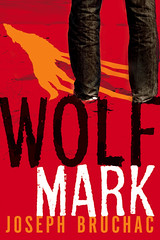
iTunes/iBooks


Originally published at Stacy Whitman's Grimoire. Please leave any comments there.
Reader reactions are so subjective. One person might think there’s not nearly enough worldbuilding in a book (“give me more! MORE!”) and another might say of the exact same book that what worldbuilding there is was way too confusing (“I couldn’t keep all those made-up words straight!”).
So how do you, as the author, balance the needs of such a wide range of readers when you’re working in a complex world that needs development? And how do you balance the need to establish your characters, setting, and plot with the need to spool out information to your reader to intrigue them rather than confuse them?
This is a question that pretty much every author and editor of speculative fiction struggles with, particularly because we, as veterans of the genre, are already more comfortable with a lot of worldbuilding jargon than your average teen reader, particularly teen readers whose preference for fantasy runs more toward the contemporary paranormal variety. There are a number of reasons why I think Twilight was so popular on such a broad scale, but one of the biggest ones was the relatability of the situation. So what if you’ve never had a vampire show up at your high school? It could happen!
Think about all the really big fantasy hits of the last few years in children’s and YA fiction: Harry Potter, Percy Jackson, Twilight, Hunger Games. Of these books’ beginnings, only The Hunger Games is all far that outside the everyday experiences of your average young reader, and even The Hunger Games starts with a relatable situation—a coal mining family lives in a desperate situation and must hunt for food; while most kids who would have access to The Hunger Games don’t live under a despotic regime, it’s plausible that it could happen in the real world. Harry Potter and Percy Jackson are ordinary kids going to school, living somewhat normal lives (even if abusive ones, in the case of Harry) before their worlds change with the discovery of magic. Their starting point is relatable.
What this means is that readers of Harry Potter, Percy Jackson, and Twilight figure out the world alongside the main character. Information is spooled out as the character needs it, so the reader doesn’t have to absorb everything at once. This is a low bar for entry, not requiring much synthesis of information.
What about Hunger Games? Now it gets a little tougher. Suzanne Collins starts out with a perfectly relatable (if a tiny bit cliche) situation, the main character waking up and seeing her family. We get some exposition on Katniss’s family and the cat who hates her. But it becomes non-cliche by page 2, when we learn about the Reaping. Ah! What’s the Reaping, you ask? We don’t know yet. Now the bar for entry is raised. There is a question, the answer for which you’re going to have to read further to find out. The infodumpage level is low, but there is still some exposition in the next few pages, letting us know that Katniss lives in a place called District 12, nicknamed the Seam, and that her town in enclosed by a fence that is sometimes electrified—and which is supposed to be electrified all the time.
Collins’s approach to spooling out a little information at a time is to explain each new term as she goes, but some readers think that feels unnatural in a first person voice because the narrator would already know these things, so why is she explaining them to the reader? It depends on the story, in my opinion—Collins makes it work because of how she crafted Katniss’s voice. It is a very fine line to walk—I can’t tell you how many submissions I’ve gotten that start out with, “My name is X. I am Y years old. I live in a world that does Z,” an obvious example of how this approach becomes downright clumsy when

By:
Stacy Whitman,
on 10/24/2011
Blog:
Stacy Whitman's Grimoire
(
Login to Add to MyJacketFlap)
JacketFlap tags:
dystopia,
science fiction,
young adult literature,
publishing,
children's literature,
tu books,
tu,
karen sandler,
tankborn,
Add a tag
 We’ve been getting some really great reviews in for Tu’s fall books, so I figured I’d start by sharing a few that have come in recently for Tankborn by Karen Sandler. I’m just quoting a few parts of each review, so follow the links to the blogs below for the whole reviews! (And this isn’t even all of them—the post was getting too long. Thanks so much to everyone who has read it so far, and of course I look forward to reading more reviews as others get a chance to read it.)
We’ve been getting some really great reviews in for Tu’s fall books, so I figured I’d start by sharing a few that have come in recently for Tankborn by Karen Sandler. I’m just quoting a few parts of each review, so follow the links to the blogs below for the whole reviews! (And this isn’t even all of them—the post was getting too long. Thanks so much to everyone who has read it so far, and of course I look forward to reading more reviews as others get a chance to read it.)
Science fiction is definitely experiencing a renaissance. . . . Sandler deftly weaves strands of race, privilege, politics, greed, and romance into a fascinating culture. The young protagonists are very real and exhibit great strength of character.
—Diana Tixier Herald of Genrefluent
Oh, my goodness, is that a person of color on the cover of a YA novel? It is! And she’s beautiful, and Sandler is awesome for writing about women of color in a genre that is inundated with stories about white teenagers, their special powers and their absent parents. And that cover is beautiful by itself with all that green and blue.
<snip>
Kayla’s assignment is in a large trueborn house, where, as soon as she arrives, she’s called a jik twice. But here’s where the real story starts.
Here, Kayla is brought face-to-face with Devak, the trueborn boy who saved her brother earlier in the book. She’s there to care for his great-grandfather, but Zul Manel has other things in store for her. The best part of this book is watching Devak go from idly racist to enlightened. Sometimes it’s hard for us to understand intense racism and hate, but I can see how Devak’s insulated trueborn upbringing could make him blind to the GENs’ plight. ”It’s for their own good”, “they like the way things are”, “resetting and realigning a GEN is in their best interest” are all common tropes that Devak has has drilled into his head since he was a child. It’s like some sort of benevolent slavery, with “benevolent” having a very flexible definition. Seeing Kayla changes him, and when he meets Mishalla, he doesn’t even blink.
Mishalla is vital to the story as well, though she’s not nearly as interesting as Kayla. Mishalla is in a creche, taking care of ostensibly orphaned lowborn children. She’s frightened and easily cowed for the most part, but that just comes with being a GEN. I think the plot needed Mishalla to stay where she was for the story to be furthered, but Mishalla really is important. She overhears vital information and puts her life on the line to save children who, in a few years, would look right through her or call her a jik. That’s courage.
This book is bittersweet. I enjoyed it thoroughly, but it made me a little sad at the end. I wish this one was a series! Look for it next month!
—Tina at Nose in a Book, Head in a Blog
It is rare that I come across a book that I would love to teach. I’m not headed out to be a teacher, or to make lesson plans of any sort, but there have been a few times that I’ve come across a book so perfectly written that it is made to be in a classroom. A book that has lessons that need to be taught with a plot that can capture the heart of a high school student set against reading. Tankborn is on
These past few weeks! In books!
As you may have been able to tell from my somewhat sporadic blogging I've had a rather bananas couple of weeks, so these links are somewhat spotty. But! I still aim to please with the link love.
First up, wow, some massive news out of Facebook yesterday, as they unveiled a
whole slew of new changes that are going to seriously impact the way we live online. It's a lot to keep track of, and my friend
Sharon Vaknin has a really helpful article on the
five things you need to know about the changes (links are to CNET, I work at CNET).
Perhaps the biggest change is a complete overhaul of profiles. Facebook unveiled Timeline, which will basically be your entire life (photos, status updates, changes) on Facebook, scrollable. And the new Ticker (aka the
Facebook within yo Facebook) is now rethought to basically share with your friends what you are reading/watching/doing. You'll even be able to share what you are listening to, and your friends can click on it, the song will sync, and you can listen to it together.
For someone who mused openly about
the permanence about Facebook yesterday, I have to say I'm deeply impressed with the changes. Timeline is a whole new way of chronicling and visualizing your life. Not everyone is going to be comfortable with that and I'm sure it gives some people the willies, but I think a lot of people are really going to like seeing their whole life and their friends/family's life all in one place. I wish it had been around when my grandparents were alive.
As for the other changes, we'll see how much people really want everything they watch/read/listen/do sent to a Facebook Ticker and whether they really want to see everything their friends watch/read/listen/do on Facebook. I have my doubts.
What do you think of the new Facebook?
Book news!
I'm late to this controversy, but there has been a whole lot of discussion around the topic of LGBT subjects in YA literature, and some wildly intelligent responses. What kicked off the discussion was a post by two authors who said an agent urged them to
de-gay their novel. This kicked off what started out as a pretty anguished discussion in the YA book world, but there were two great responses I wanted to point out.
First, Malinda Lo brought some
actual stats to the discussion, tracking LGBT books over time, broken out by publisher, and by gender. Some very helpful context. And agent Michael Bourret has a post with an inescapable conclusion: If you want to see more LGBT novels, the best way to ensure that there are more is to
seek out and buy more LGBT novels.
Amazon has kicked off its
library e-book lending program,

The Ramayana was required reading in my all-girls high school and I quite like the idea of a new generation of students studying the great Indian epic using this graphic novel.
Sita's Ramayana, a graphic novel retelling by Samhita Arni and Moyna Chitrakar (Tara Books, 2011)
 Tankborn received its first press review from Kirkus!
Tankborn received its first press review from Kirkus!
Advanced genetic engineering and upsettingly plausible caste oppression keep pages turning in this futuristic science fiction tale… A good option for science-fiction fans interested in genetic engineering, rebellion and class issues.
Originally published at Stacy Whitman's Grimoire. You can comment here or there.
 |
| "Daniel in the Lion's Den" - Peter Paul Rubens |
Simple question, not so simple answer. Which book do you most wish you had written?
Are you going with the mega fortune? Literary greatness? Maybe a little of both?
I'm going with THE GREAT GATSBY.
What about you?

By:
Stacy Whitman,
on 7/5/2011
Blog:
Stacy Whitman's Grimoire
(
Login to Add to MyJacketFlap)
JacketFlap tags:
mystery,
science fiction,
young adult literature,
publishing,
writing,
fantasy,
children's literature,
submissions,
tu,
Add a tag
For those of you who submitted PARTIAL manuscripts, I am nearly up to date on everything that has come in up through June 1. I’ll post when I am, so that you’ll know that if you haven’t heard from me, the answer is no. But I’m still working my way through a few.
For those of you from whom I asked for FULL manuscripts, I’m working my way through that reading, getting back to people with editorial letters, feedback, or (sadly, yes) declines as necessary. I respond to full manuscripts; it just takes me a while. If it’s been more than four months since I got your manuscript, a reply to you might have slipped through the cracks. Feel free to follow up to see where your manuscript is in such a case. If it’s been less than four months, I should be getting back to you sometime this month.
Also, if you are a member of a writing community, listserv, message board, or other group for which this might be interesting—to which I haven’t already posted a call for submissions—you are welcome to share this around:
Call for submissions
TU BOOKS, an imprint of LEE & LOW BOOKS, publishes speculative fiction for children and young adults featuring diverse characters and settings. Our focus is on well-told, exciting, adventurous fantasy, science fiction, and mystery novels featuring people of color set in worlds inspired by non-Western folklore or culture. We welcome Western settings if the main character is a person of color.
We are looking specifically for stories for both middle grade (ages 8-12) and young adult (ages 12-18) readers. (We are not looking for picture books, chapter books, or short stories. Please do not send submissions in these formats.)
For more information on how to submit, please see our submission guidelines at http://www.leeandlow.com/p/tu_submissions.mhtml. We are not accepting unagented email submissions at this time.
What I’m particularly interested in seeing lately: Asian steampunk, any African culture, Latino/a stories, First Nations/Native American/Aboriginal fantasy or science fiction written by tribal members, original postapocalyptic worlds, historical fantasy or mystery set in a non-Western setting.
Stacy Whitman
Editorial Director
Tu Books
Originally published at Stacy Whitman's Grimoire. You can comment here or there.
This week in Hogwarts...
Yes, the big news about Pottermore was revealed!! Sort of! Okay just a bit! It's actually not coming until July for some people and October for everyone else!
This week J.K. Rowling announced that Pottermore would be an online site that will where you go for Harry Potter e-books, and a unique online reading experience that seems to involve some reader participation. The response was swift and breathless about what this means for the world of books. Is J.K. Rowling self-publishing her e-books? Has she cut out booksellers and Amazon in one fell swoop? If Rowling doesn't need a publisher, what are publishers for?
Slooooooow down, everyone. First off, the Wall Street Journal reported that Scholastic and Bloomsbury UK are receiving a portion of e-book sales and are providing marketing support, so while you could argue that this is a form of self-publishing, it's not exactly cutting traditional publishing out of the loop. And the WSJ also confirmed that Amazon is working with Pottermore to make sure the books will be available on the Kindle, and Sony may be selling branded e-readers through the site.
So yes - it's somewhat unique for a book to be made available through a dedicated site, but let's not go and declare world of publishing completely upended. All the major players will be sitting at the Pottermore table.
Meanwhile, in true self-publishing news, John Locke is the first self-published author to sell one million Kindle e-books, but since he's selling them at $0.99, the LA Times' Carolyn Kellogg asks, "At what cost?"
And the New York Times magazine has a nice profile on eminently sensible self-publishing-turned-traditional-publishing star Amanda Hocking.
GalleyCat picked up our poll on what e-readers should cost and then had a cool post that featured arguments for $0.99, $1.99, $2.99, $5.00, $6.99-$7.99, $9.99 and $12.99-$14.99 price points from industry luminaries. Moby Lives weighed in as well.
And finally (swear) in publishing and e-book news, disaster consultant (yeah) Ray Nagin self-published his memoir and appeared on the Daily Show. He says he self-published because "when you turn your manuscript over to a publisher you never know what's going to happen." Not sure whether he means "They might not make me an offer" or "They might try to edit it," but at the very least this is probably a template for future politicians and authors who want to get their book out quickly. Get it written, get it out there as fast as possible by self-publishing, go on the Daily Show to promote it.
And speaking of speed, agent Rachelle Gardner has a post on
27 Comments on This Week in Books 6/24/11, last added: 6/27/2011
The announcement came out in Publisher’s Marketplace today, so I can share it here, too!
Kimberly Pauley’s CAT GIRL’S DAY OFF, when a girl’s celebrity-addicted friends make her watch a viral Internet video, her secret “talent” to understand the language of cats catapults them into a celebrity kidnapping mystery with ties to Hollywood and Ferris Bueller’s Chicago, to Stacy Whitman at Tu Books, in a nice deal, for publication in Spring 2012, by Larry Kirshbaum at LJK Literary Management (World).
You might know Kim for her hilarious first novel SUCKS TO BE ME or her hilarious second novel STILL SUCKS TO BE ME. This one’s even funnier, and throws in a nice homage to Ferris Bueller’s Day Off, as well. We’re well into the revision process, and this one is slated come come out spring 2012. The listing doesn’t say here, but it’s a YA.
Go congratulate Kim, either at her blog or on Twitter.
Originally published at Stacy Whitman's Grimoire. You can comment here or there.




 5. Christopher Paolini release
5. Christopher Paolini release Holly Black – A Modern Faerie Tale (Tithe, Valiant, Ironside)
Holly Black – A Modern Faerie Tale (Tithe, Valiant, Ironside)
 E. Lockhart – The Disreputable History of Frankie Landau-Banks
E. Lockhart – The Disreputable History of Frankie Landau-Banks










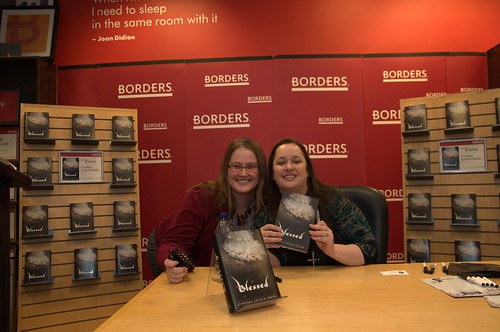
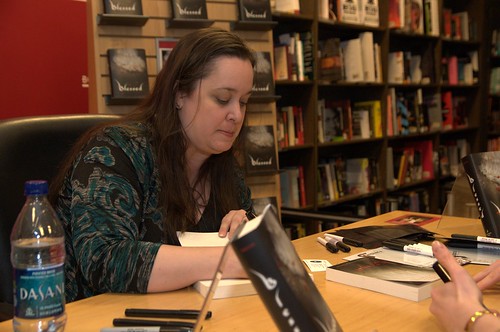
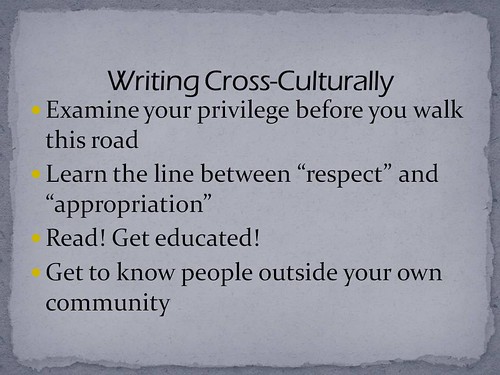

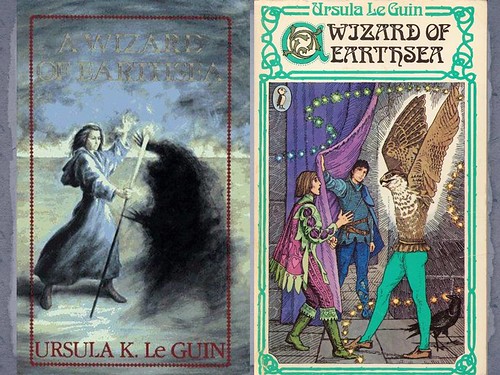

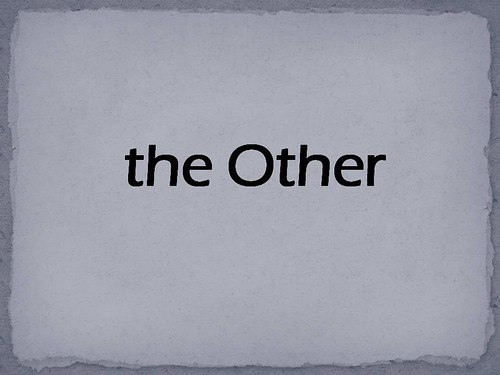

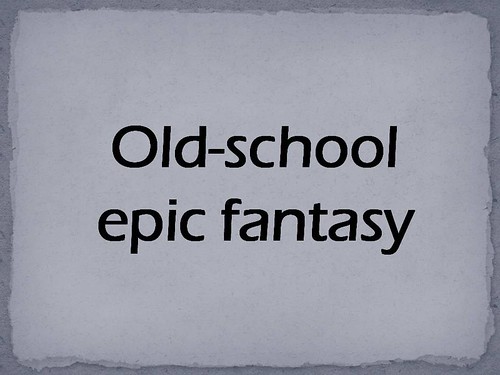
Thank you for that great post. This is very useful for all people.